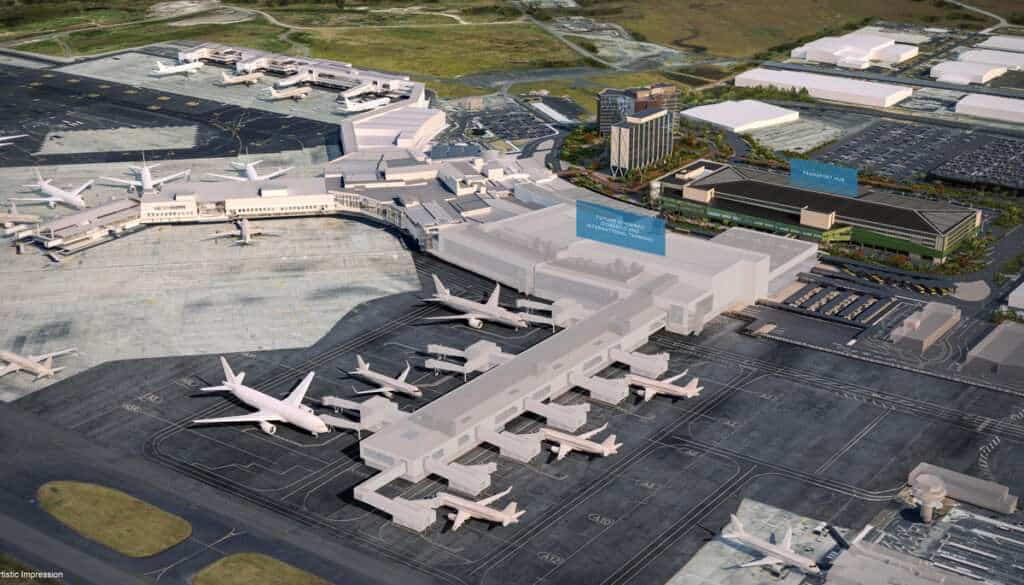Travellers are keen to see Auckland Airport progress infrastructure development, with a strong majority saying the construction is necessary.
A new study carried out at the domestic terminal involving more than 600 travellers from across New Zealand asked people about the current experience at Auckland Airport. It questioned them as to what improvements they’d like to see take place.
Auckland Airport Upgrade: Vote of Support
Travellers overwhelmingly support ongoing development at Auckland Airport, with a strong focus on smoother travel experiences.
A recent study conducted at the domestic terminal surveyed over 600 travellers from across New Zealand, gauging their experiences and desired improvements.
While the majority reported positive experiences (having taken an average of 2 international and 4 domestic flights in the past year), a significant 76% expressed the need for further development.
This number rose to a resounding 81% in favour of investment to future-proof the airport against extreme weather events.

Prioritizing Smooth Passenger Flow
“Travellers not only support development, but they truly value seamless journeys,” said Scott Tasker, Chief Customer Officer.
“This includes quick indoor connections between domestic and international terminals, effortless baggage check-through, and faster processing with shorter queues.”
“Our new integrated terminal, unifying domestic jet and international travel under one roof, directly addresses these priorities.”

Integrated Terminal Takes Shape
The Kantar study coincides with significant progress on the new integrated terminal. Over 600 personnel are actively involved in the five-year construction project.
“While construction is ongoing,” explains a spokesperson, “we’ve completed the first major phase – a highly complex 3-story, 95-meter eastward extension of the terminal structure.
This forms the core that will seamlessly connect the existing international terminal to the new domestic jet terminal.
It will house everything from airline lounges to the dedicated domestic-to-international indoor passage and the upgraded baggage system.”

Travellers Want Core Improvements
The study revealed a clear desire for Auckland Airport to focus on essential improvements and enhance travel flow.
A staggering 90% of travellers advocated for increased capacity to enable more flights and potentially lower airfare competition.
Additionally, 89% desired more space and modern seating, 88% expressed a need for better baggage handling, and 87% prioritized faster processing and shorter queues.
Notably, 81% highlighted the importance of a short, indoor connection between domestic and international terminals.
Meeting Global Airport Trends
“These findings mirror recent international surveys,” acknowledges the spokesperson. “it indicates high traveller expectations for airport basics, including better seating (83%) and reduced queuing times (79%).”
“Airports worldwide, including Auckland, are undertaking major upgrades to core infrastructure, much of which dates back to the 1960s and 70s.”

Addressing Capacity Constraints
“Our current domestic terminal simply lacks the capacity to handle peak flight volumes,” the spokesperson continues.
“This translates to limited ticket availability and potentially higher prices during popular travel periods. The new domestic jet terminal addresses this challenge with a 26% capacity increase, thanks to aircraft gates accommodating both widebody and narrowbody jets.”
“Additionally, dedicated domestic bus lounges offer a further 10% seat capacity boost. This flexibility allows for more flights, accommodates a wider range of airlines during peak periods. It enables the use of larger aircraft for mass passenger movement during holidays or major events.”

Maintaining Affordability
Currently, Auckland Airport’s domestic jet charges are significantly lower (between 45% and 69%) compared to other major New Zealand airports.
Keeping travel affordable remains a key objective of the infrastructure program. While final pricing is subject to consultation, the projected average domestic jet passenger charge for the upcoming five-year period (2028-2032) sits at a reasonable $25.
“New infrastructure comes at a cost,” acknowledges Mr. Tasker, “but we are committed to delivering value and tangible benefits to travellers. Especially considering the current economic climate.”
“Based on our survey results, we are confident that our improvements align with traveller priorities and are essential for a resilient gateway airport.”
Conclusion
The $3.9 billion terminal integration project is slated for completion in 2028/2029, paving the way for crucial runway upgrades by 2030.
“Construction of the integrated terminal is well underway, with 35% of the project now in active construction and 20% already completed.” “Major airlines have consistently backed terminal integration since 2014, recognizing its importance for our economy, airport safety, and long-term resilience.”

Click the banner to subscribe to our weekly newsleter.

Click the photo to join our WhatsApp channel so then you can stay up to date with everything going on in the aviation industry!









